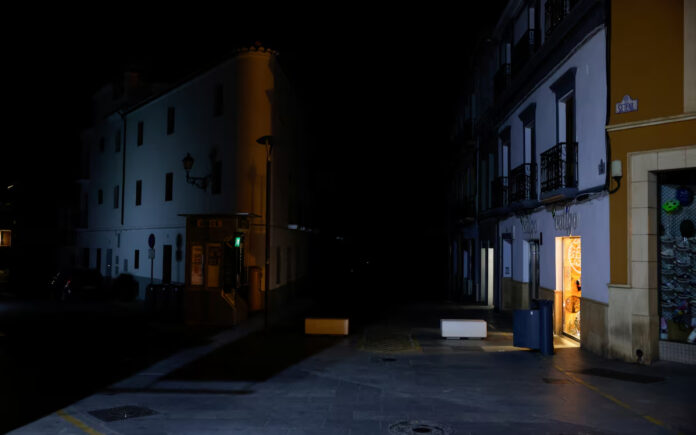Madrid: The unprecedented blackout that crippled Spain and Portugal earlier this week has cast a sharp spotlight on the vulnerabilities of modern energy systems—particularly as countries push aggressively toward low-carbon transitions. While the exact cause of the failure remains unconfirmed, potential explanations range from Spain’s increasing reliance on renewable energy sources and cross-border electricity exports to technical faults or even sabotage. The disruption has highlighted not only the fragility of current infrastructure but also the urgent need for strategic upgrades.
Spain’s national grid operator, Red Eléctrica (REE), reported that the crisis began around midday on April 28, when a “strong oscillation” in power flows caused a sharp and sudden collapse in electricity generation. The instability severed the Spanish grid’s connection to the broader European power network, triggering a cascading failure that extended into Portugal—whose grid depends heavily on electricity imports from its neighbor.
Although large-scale blackouts are rare, they are not unheard of. A 2019 outage in the United Kingdom—caused by a lightning strike and technical missteps—left nearly a million customers without electricity. What sets the Iberian event apart, however, is the massive scope: nearly 60% of Spain’s power supply was lost in a matter of seconds, according to Prime Minister Pedro Sánchez.
While renewable sources like solar and wind now account for over 60% of Spain’s electricity mix—a commendable feat for decarbonization—they also present new engineering challenges. Traditional power systems powered by fossil fuels or nuclear plants feature large rotating generators that provide inertia, a critical feature for grid stability. In contrast, renewable sources lack this inherent buffer unless paired with technology such as synchronous condensers. Without adequate compensatory mechanisms, grids become more vulnerable to abrupt disturbances.
Some critics, including prominent climate policy opponents, may exploit the incident to argue against further renewable integration. However, experts have long anticipated such challenges and have emphasized the need for infrastructure upgrades to handle high proportions of intermittent generation. “We’ve known about this issue for years,” one industry analyst noted, cautioning against framing renewables as the problem rather than acknowledging gaps in grid modernization.
Despite the disruption, the blackout may serve as a wake-up call that accelerates investment in power infrastructure. With electricity expected to account for up to 70% of global energy consumption by 2050—compared to just 20% today—the grid must be equipped to handle a surge in demand, especially from electric vehicles and heat pumps. The Energy Transitions Commission estimates that annual global investment in grids will need to rise from $300 billion to $800 billion by mid-century to meet this demand sustainably.
Also Read | China Lifts Sanctions on European Parliament Members in Bid to Reset Ties
This funding will not only replace aging transmission lines but also enable the deployment of digital controls, advanced monitoring systems, and energy storage technologies. Yet, such long-term needs often compete with more immediate political priorities, such as defense spending or short-term economic pressures.
Still, the Iberian outage has re-centered the discussion on the importance of grid resilience in Europe. As the investigation continues—Spain’s High Court is probing potential sabotage, and REE has ruled out a cyberattack while pointing to a connection issue with France—policymakers are being urged to treat energy networks as critical national infrastructure requiring urgent and sustained attention.



